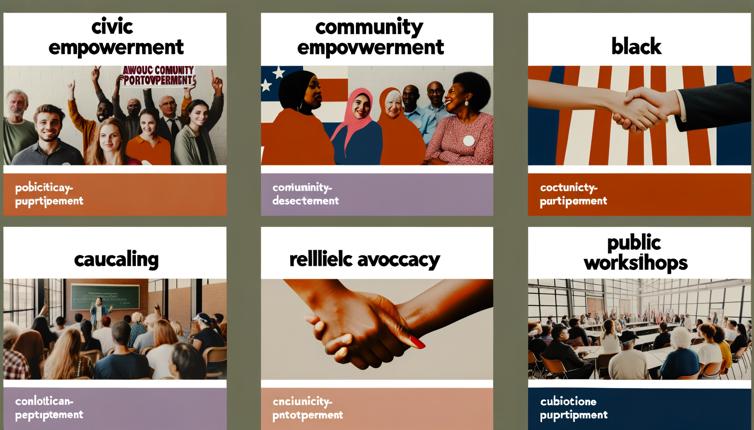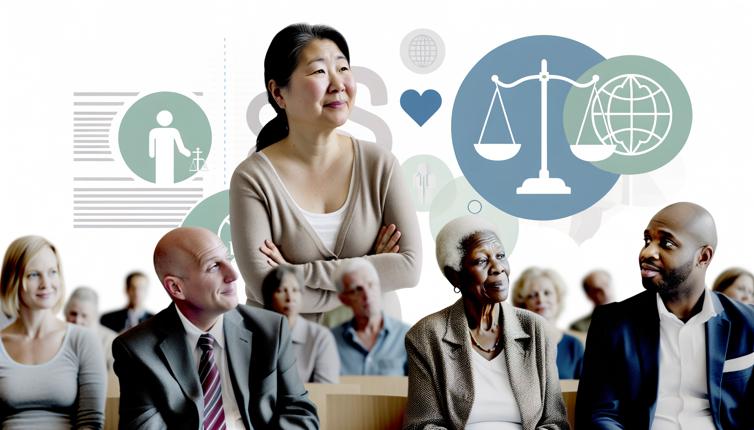Understanding the Importance of Political Participation
Political participation is the foundation of a democratic society. It allows citizens to have a say in the decisions that affect their lives and communities. When individuals and communities are politically engaged, they can advocate for policies that address their needs and work towards a more inclusive and equitable society.,Increased political participation also leads to better representation. When more citizens participate in elections, elected officials are more likely to reflect the diversity of the community they serve. This can lead to policies that are more responsive to the needs of all community members.,Furthermore, political participation fosters a sense of belonging and empowerment. When individuals and communities are actively involved in political processes, they feel a sense of ownership over their democracy and are more likely to engage in other forms of civic participation.,Overall, political participation is essential for creating a thriving and inclusive society. By encouraging voter turnout and civic engagement, communities can empower themselves and ensure that their voices are heard.
Barriers to Political Participation
While political participation is crucial, many communities face barriers that limit their ability to fully engage in the political process. Some common barriers include:,- Voter suppression tactics, such as strict voter ID laws and purging of voter rolls, which disproportionately affect marginalized communities.,- Limited access to reliable information about candidates and issues, especially for communities with limited resources or language barriers.,- Lack of awareness or understanding of the importance of political participation and how to get involved.,- Socioeconomic barriers, such as long working hours or lack of transportation, that make it difficult for individuals to vote or engage in other forms of civic participation.,- Disillusionment and apathy resulting from a perceived lack of impact or representation in the political system.,Addressing these barriers is essential for empowering communities and ensuring that everyone has an equal opportunity to participate in the political process.
Strategies for Increasing Voter Turnout
To increase voter turnout, communities can implement various strategies, including:,- Voter education campaigns: Providing accessible and accurate information about voter registration, polling locations, and candidates' positions on key issues can help individuals make informed decisions and feel more confident about participating in elections.,- Expanding access to voting: Implementing policies such as early voting, extended polling hours, and vote-by-mail options can remove logistical barriers and make it easier for individuals to vote, especially those with limited time or transportation.,- Community organizing: Building local networks and mobilizing community members can create a sense of collective responsibility and encourage individuals to engage in the political process. This can include grassroots campaigns, door-to-door outreach, and community forums.,- Addressing voter suppression: Advocating for policies that protect voting rights and challenge voter suppression tactics can help ensure that all community members have equal access to the ballot box.,By implementing these strategies, communities can work towards increasing voter turnout and strengthening democratic participation.
Promoting Civic Engagement
In addition to increasing voter turnout, communities can also promote civic engagement by:,- Providing opportunities for volunteerism and community service: By organizing volunteer events and encouraging community members to give back, individuals can become more invested in their community and develop a sense of civic responsibility.,- Supporting local initiatives: Encouraging community members to participate in local government, attend council meetings, and engage in public discourse can foster a sense of ownership and collective decision-making.,- Facilitating dialogue and debate: Creating spaces for civil discourse and constructive dialogue allows community members to discuss issues, share perspectives, and work towards common solutions. This can include community forums, workshops, and online platforms.,- Investing in civic education: Incorporating civic education in schools and community programs can equip individuals with the knowledge and skills necessary to participate in the political process and make informed decisions.,By promoting civic engagement, communities can create a culture of active citizenship and ensure that all voices are heard in decision-making processes.
Conclusion
Empowering communities through political participation is crucial for a thriving democracy. By addressing barriers to political participation, implementing strategies to increase voter turnout, and promoting civic engagement, communities can ensure that their voices are heard and their needs are met. It is essential for individuals, community organizations, and policymakers to work together to create an inclusive and equitable political system that reflects and serves the interests of all community members.








